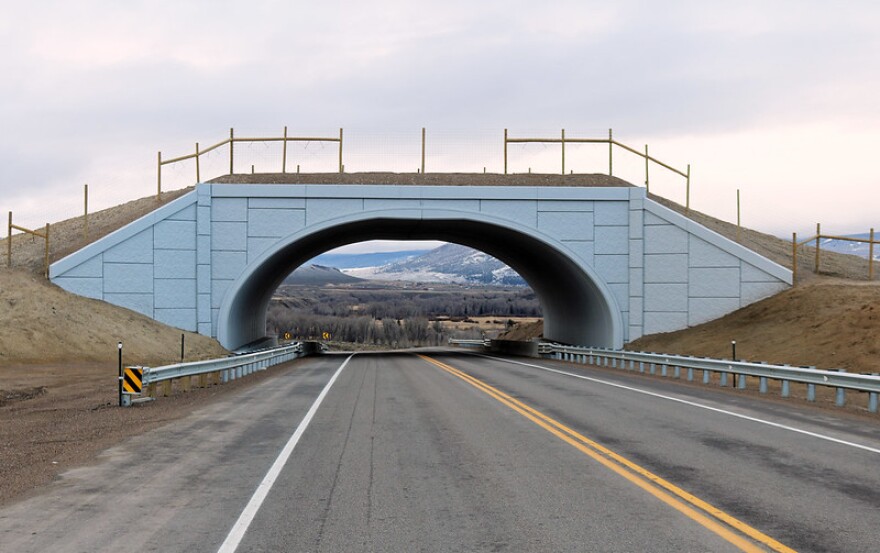News brief:
Big game herds can travel hundreds of miles between their summer and winter ranges. That means they often cross neighborhoods, highways and fences – hazards that could increase as the Mountain West faces further development pressures.
So, state and federal officials are expanding efforts to preserve migration corridors.
A new film set in Grand Teton National Park and the surrounding region demonstrates the need for preserving habitat and migration routes. “Animal Trails: Rediscovering Grand Teton Migrations” tracks mule deer, pronghorn and other game as they travel from federal parks to Native American reservations, private lands and state parcels in Wyoming and Idaho.
Grand Teton biologist Sarah Dewey was interviewed for the film, available on YouTube. She said in a news release that, while the animals themselves are spectacular, the groups of people that support them provide a selfless and vital service.
“Connections with new partners and collaborators – private landowners and other agencies, organizations or land managers who are stewards of the winter ranges – are key to conserving well beyond park boundaries and are critical to sustaining these migratory populations with Grand Teton,” she said.
Lawmakers in Utah, Nevada and other states have funded projects for wildlife crossings over or under roads in recent years. This infrastructure not only saves human and animal lives, it also saves money.
Additionally, the U.S. Department of Agriculture is expanding its program to preserve big game habitat in Wyoming, Idaho and Montana. This supports voluntary conservation programs – often with private landowners – for things like removing hazardous weeds or unnecessary fences. In Colorado, the Bureau of Land Management is drafting a plan to maintain movement corridors for bighorn sheep, pronghorn, elk and mule deer.
Residents of the Mountain West can also help by driving safely and slowly. November brings an increased risk of vehicle-wildlife collisions, both because daylight savings time ends and animals are on the move to find their winter homes.
This story was produced by the Mountain West News Bureau, a collaboration between Wyoming Public Media, Nevada Public Radio, Boise State Public Radio in Idaho, KUNR in Nevada, KUNC in Colorado and KANW in New Mexico, with support from affiliate stations across the region. Funding for the Mountain West News Bureau is provided in part by the Corporation for Public Broadcasting.
Copyright 2023 Wyoming Public Radio. To see more, visit Wyoming Public Radio. 9(MDEwODI1MTE0MDEzNTk1NjQ4ODc4OTk0Ng004))


